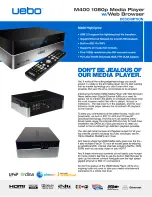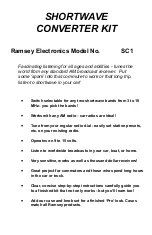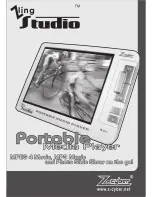
17
Operation - Ripping
6.1 The Ripping Process
Ripping CDs is a simple process. It is preferable, while
ripping, for UnitiServe-SSD to be connected to a working
and reliable internet service.
Note:
An internet connection is necessary for UnitiServe-SSD
to identify CDs and download their artist, title, track listing
and artwork data. If UnitiServe-SSD is unable to access
the internet while ripping, it will initially interrogate a small
internal database for the CD’s associated data. If the CD is
not found on the internal database, only the ripped audio
data and its identification code will be stored. Manual
input of CD data or further AMG and FreeDB database
requests can be made via the Desktop Client application
once an internet connection is re-established.
Note:
Right-click on the album name in the Desktop Client
interface to request an online database lookup manually.
To rip a CD insert the CD in the UnitiServe-SSD transport
slot. Ripping will begin automatically and takes up to eight
minutes.
Note:
It is good practice to check that the playing surface
of each CD is clean before ripping.
Note:
Ripping can be cancelled once underway by
touching the UnitiServe-SSD front panel logo or selecting
Abort on the Display Interface Ripping Monitor page.
When UnitiServe-SSD has ripped the CD and downloaded
its associated data it will eject the CD automatically. As
soon as a CD has been ejected, UnitiServe-SSD is ready
to rip the next one. The
Ripping Monitor
menu provides
feedback on progress as the ripping process takes place.
The CD will be included in UnitiServe-SSD’s music library
listing a short while after it has been successfully ripped. It
will then be available for playback either locally or across
a NaimNet network.
6 Ripping
UnitiServe-SSD will only fulfil its potential if it holds a significant library of music. A typical
music CD carries approximately 600MB of data so every 1TB of network storage capacity
will hold approximately 1500 CDs. Ripping a typical CD takes up to eight minutes thanks
to the advanced data handling algorithms that ensure, unless the CD is badly damaged,
the ripped data is always a “bit-perfect” copy.
6.2 Copyright Issues
The music carried on a CD, and the recording of the CD
itself, is likely to be the subject of copyright restrictions
which allow the owner of the CD only to make copies
(ripping in effect copies a CD) for personal use only.
Ripping CDs that you don’t personally own may violate
copyright law.
Note:
CD copyright law may vary with territory.









































